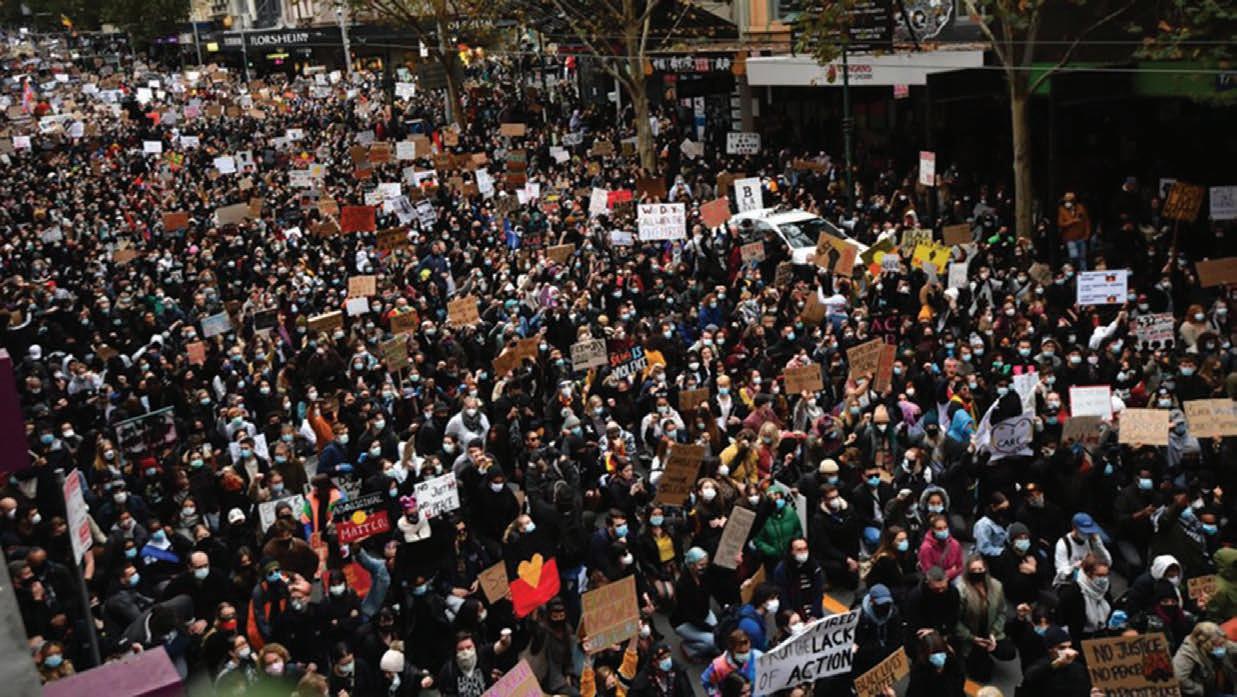
2 minute read
Reflections on the Black Lives Movement in 2020
Growing Strong reflections on the black lives matter movement in 2020
CW: Names of deceased Indigenous people.
Advertisement
On May 25th, 2020, George Floyd was brutally murdered by a police officer in Minneapolis, Minnesota. The widespread reactions and protests across the globe that came in the wake of Floyd’s death highlighted the unrelenting nature of white supremacy, and how deeply it resonates with the Indigenous and Black populations of every settler project.
Soon, similar Black Lives Matter protests sprung up in so-called ‘australia’ too, with more mainstream support than their efforts had ever seen before. The Morrison government and Australian police force made feeble attempts to distance themselves from the issue of police violence, labelling it a foreign issue deserving sympathy, not reflection. However, one cannot ignore the decades long Stop Black Deaths in Custody campaign that localised BLM in australia. It only takes listening to the words of Leetona Dungay, mother of Dunghutti man David Dungay Jr., who was killed at the hands of Long Bay prison guards, to realize that this common thread of white supremacy is directly responsible for the violence it continually and relentlessly manifests upon First Nations people on their land.
“I can’t breathe” echoed throughout the streets of major cities across the country to recognise not just George Floyd’s last words, but David Dungay Jr.’s too.
Nothing could sharpen the reality of white supremacy other than COVID-19; smoke rung in the new year, heavy with the devastation that bushfires had wreaked on Indigenous communities most acutely, only to then to be plunged into a global pandemic, in which, once again, Indigenous communities felt the brunt of resource scarcity the hardest. It had become evident that the police served to surveil the people, and to punish the poor. The eruption of BLM protests across so-called australia indicated not a new problem, but a boiling point.
Protest organisers were taken to the Supreme Court and denied their permits to hold actions under the guise of Covid safety, whilst large crowds were able to gather for brazen patriotic pacifications such as football games. Protest-goers were threatened by the Police Minister with “the full force of the law” before police arrived to protests by the hundreds, decked out in riot gear, with pepper spray and sound cannons, kettling and macing the crowd of young people attempting to do the sinister act of getting home safe via Central station. The picture is painfully clear; this colonial state—and its footsoldiers, the police—exists only to stifle and subdue First Nations people and profit off their land, all whilst distracting the masses from their brutality.
The spike in international solidarity and collective momentum from the BLM actions occurred alongside a widespread demand for police and prison abolition like never before. In 2020,anti-racist and anti-colonial campaigns and organisers alike looked for a cohesive vocabulary and direction. This was found in abolition. Whilst not a new concept by any means, police and prison abolition mobilised on the greater focus on popular criticism of police.
In the wake of this Invasion Day, and looking back on this past year of activism for Indigenous justice, there is one thing that proves itself over and over; the colonial state cannot be reasoned with, cannot be negotiated with, and justice for First Nations peoples cannot and will not be achieved so long as the colonial state is standing. Always was, always will be, Aboriginal land.










